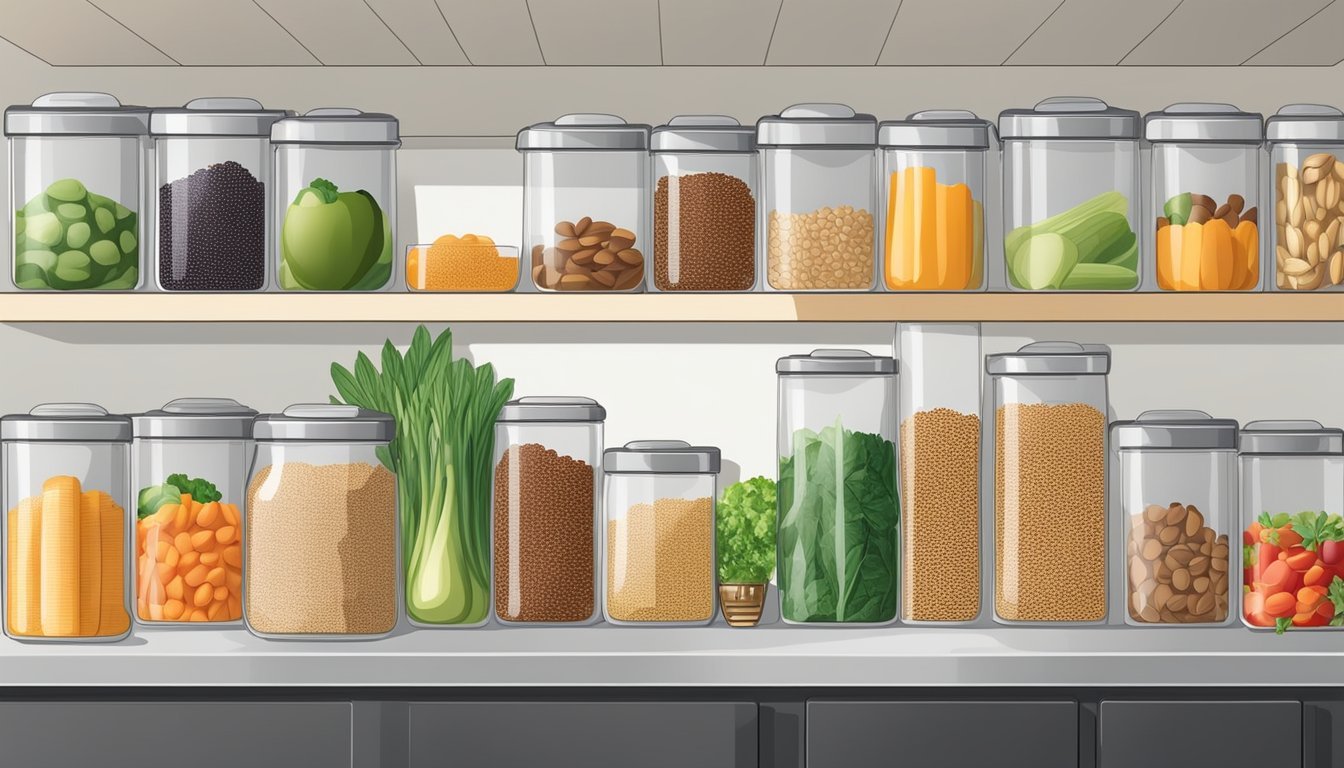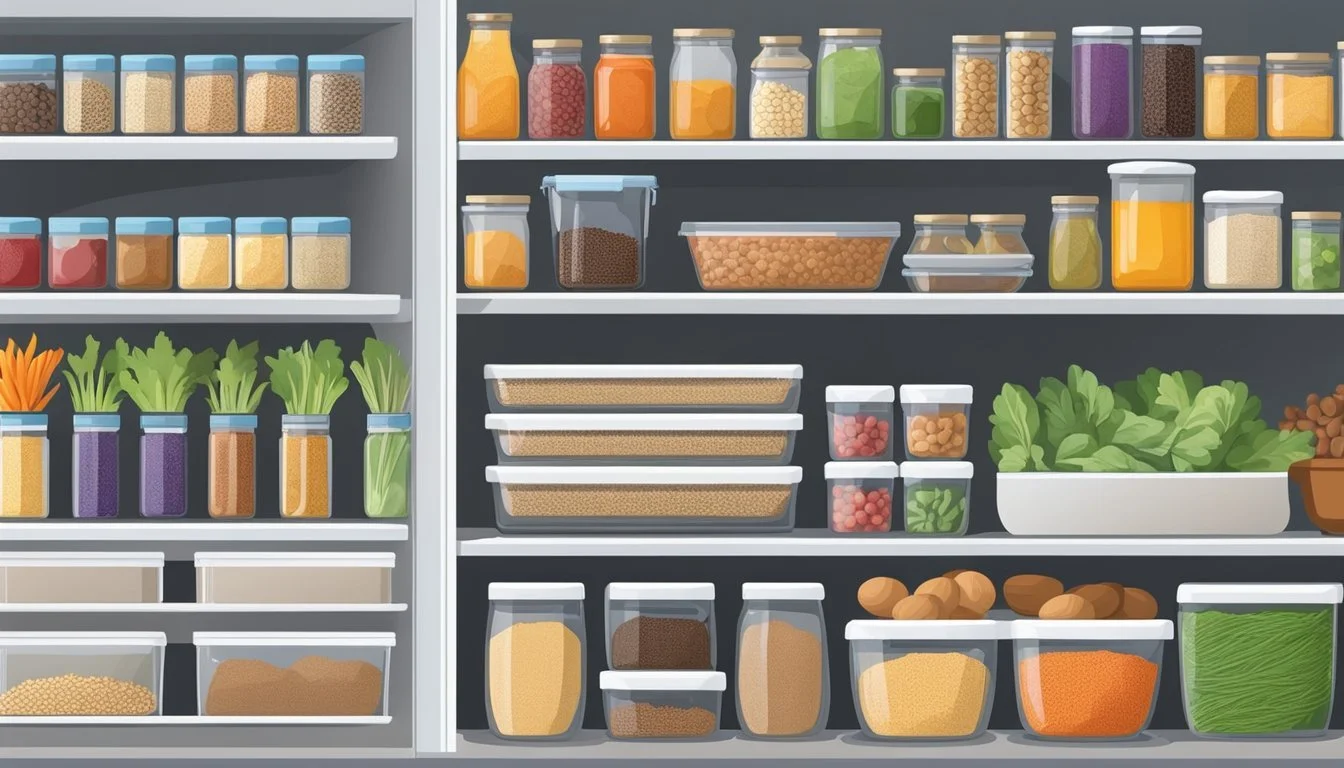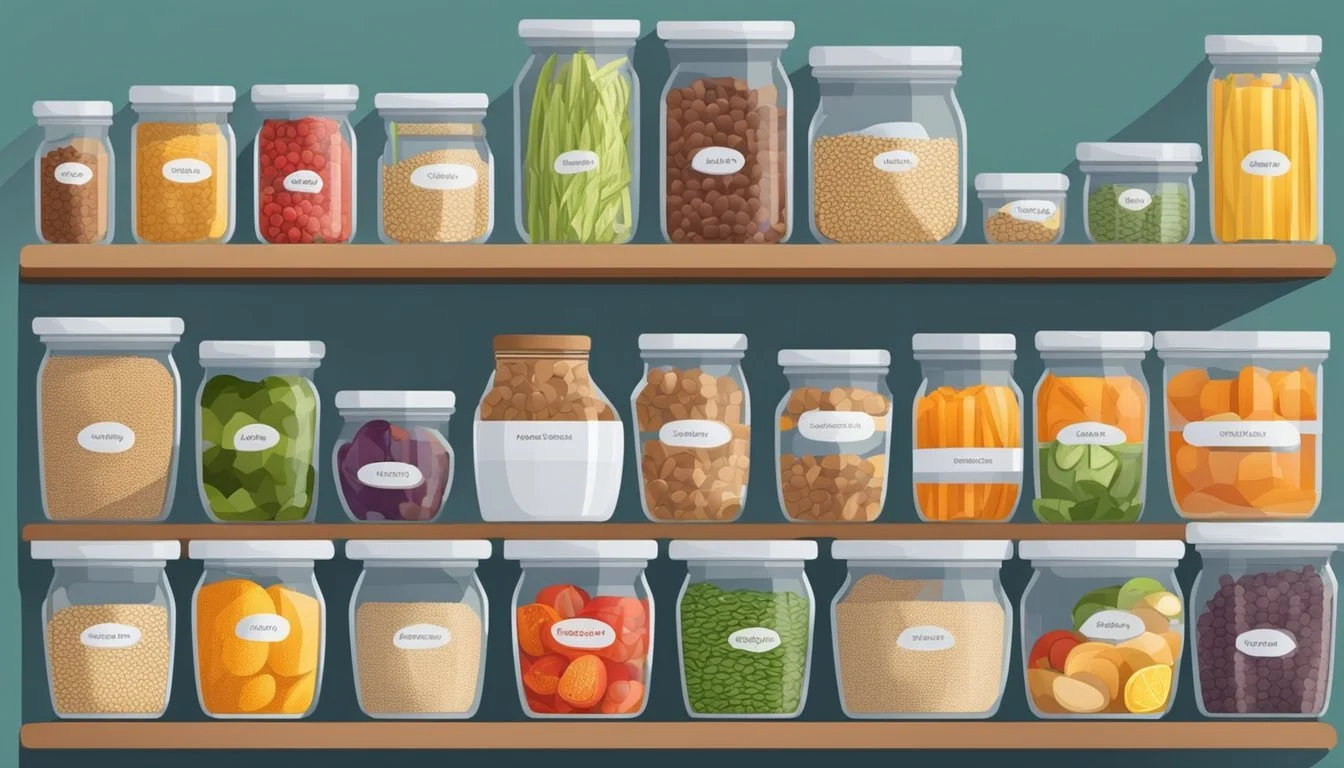The Ultimate Guide to Organizing Your Kitchen for a Candida Diet
Efficient Strategies for a Healthier Lifestyle
Organizing a kitchen to accommodate a Candida Diet requires a strategic approach, as this regimen is meticulous in nature. The Candida Diet is designed to reduce sugar and processed foods that can feed Candida yeast overgrowth and promote symptoms such as digestive discomfort, fatigue, and mood swings. To successfully adhere to this diet, one must thoughtfully arrange their kitchen to prioritize anti-inflammatory foods, non-starchy vegetables, lean proteins, and probiotic-rich ingredients.
Having an organized kitchen space makes it easier to prepare meals that align with the Candida Diet. The implementation of clear sections for allowed foods and distinct storage for compliant ingredients ensures that one can maintain this dietary change with less effort. The creation of a supportive environment in the kitchen is crucial, as it minimizes the risk of reaching for non-compliant foods and maximizes the potential for positive health outcomes.
Understanding Candida and Its Effects on Health
Candida is a type of yeast that resides in the human body, primarily in the gut microbiota. It is usually harmless, balanced by other microorganisms in the microbiome. However, factors like prolonged stress, excessive alcohol consumption, and a weakened immune system can lead to Candida overgrowth, also known as candidiasis.
Candida overgrowth can result in an imbalance known as gut dysbiosis, which destabilizes the gut microbiome. This condition might manifest through various candida symptoms such as fatigue, bloating, and digestive issues. If left unchecked, the infection may cause systemic health issues, including inflammation, allergies, and autoimmune disorders.
Candida albicans is the most common strain implicated in human infections. The ultimate candida diet aims at reducing candida presence by avoiding foods that feed the yeast. This includes sugars, refined carbohydrates, and certain dairy products. Instead, the diet promotes non-starchy vegetables, quality proteins, healthy fats, and probiotics to support gut health and restore balance.
The inclusion of probiotic-rich foods or supplements can help improve the balance of microbiota, encouraging a healthy gut environment. Proper candida treatment often involves a multidisciplinary approach that considers dietary changes, lifestyle modifications to manage stress, and sometimes medical intervention, especially in the case of persistent infections.
Risk factors for candida overgrowth include antibiotic and corticosteroid use, high sugar diets, hormonal imbalances, and chronic stress. Understanding these risk factors is essential for effective prevention and candida treatment strategies.
Principles of a Candida Diet
To manage candida overgrowth effectively, one must adhere to a diet that balances beneficial microorganisms in the gut. This entails choosing antifungal and anti-inflammatory foods that starve Candida yeast while nourishing the body.
Foods to Embrace
A Candida diet should prioritize non-starchy vegetables, such as broccoli and brussels sprouts, as well as low-sugar fruits to keep glucose levels in check, which is essential for those with diabetes. Healthy fats like coconut oil are included for their antifungal properties. Recommended foods are:
Vegetables: Broccoli, brussels sprouts, and other leafy greens. These non-starchy options are foundational.
Proteins: Lean proteins like farm-raised fish or chicken serve to support bodily functions without feeding candida.
Fats: Sources of healthy fats, such as avocado and olive oil, provide necessary nutrients.
Fermented Foods: (What wine goes well with fermented foods?) Options like sauerkraut and kefir introduce beneficial bacteria.
Antifungal Foods: Garlic and other natural antifungals help with candida control.
Low-Glycemic Sweeteners: Natural sweeteners like xylitol can be included in moderation.
Foods to Avoid
Certain foods can exacerbate candida overgrowth, such as sugars and processed items. Specifically:
Sugary Foods: This includes items with high-fructose corn syrup, cane sugar, and molasses.
Starchy Vegetables: Limit intake of potatoes and other high-starch vegetables.
Gluten: Celiac disease or gluten intolerance necessitates the elimination of gluten.
Dairy Products: Many dairy products are high in lactose, which can feed candida.
Processed Foods: These often contain additives and sugars that promote yeast growth.
Artificial Sweeteners: Avoid as they can disrupt gut flora balance.
Caffeine and Alcohol: These beverages can lead to imbalances in the gut microbiome.
Condiments: Salad dressings and sauces often contain sugars and unhealthy fats.
The Role of Supplements in Managing Candida
In managing Candida, supplements play a crucial role as adjuncts to dietary changes, enhancing the effectiveness of the treatment plan. These supplements aim to restore gut health balance and target the fungal overgrowth directly.
Probiotics and Gut Health
Probiotics are foundational supplements for reinforcing gut health. They work by introducing beneficial bacteria into the microbiome, which is critical in a candida treatment plan. A well-balanced gut flora aids in alleviating symptoms of candida by outcompeting the overgrowth for space and resources.
Benefits:
Supports the immune system
Restores healthy gut flora
Common Probiotics:
Lactobacillus species
Bifidobacterium species
Regular intake of probiotics, especially those strains researched for their efficacy against candida, may help maintain a healthy digestive system and prevent recurrences.
Antifungals and Their Usage
Antifungals are another vital component when combating candida overgrowth. These supplements work by directly attacking the cell walls of the candida yeast, thereby reducing and managing its presence in the body.
Natural Antifungals:
Caprylic Acid
Grapefruit Seed Extract
Dosage:
Follow manufacturer's instructions or healthcare provider's directions
Incorporating natural antifungals into a candida treatment regimen can disrupt the growth of the yeast, providing relief from symptoms and promoting recovery. It's essential to use these supplements as part of a comprehensive treatment plan that includes dietary adjustments to limit foods that feed candida overgrowth.
Meal Planning and Preparation
When embarking on a Candida diet, organizing the kitchen plays a pivotal role. Meal planning and preparation foster better digestion and nutrient absorption, as they ensure ready availability of suitable foods and discourage impulsive, non-compliant eating. This guide provides specific meal suggestions tailored to the Candida diet, focusing on breakfast, lunch, dinner, and snacks.
Breakfast Ideas
Omelette: Whip up an omelette using eggs, spinach, and other non-starchy vegetables, cooked in coconut oil.
Gut-Healing Pancakes: Make pancakes with coconut flour and permissible non-dairy milk, topped with allowed fruits like green apples.
Lunch Options
Salad: Combine leafy greens, cucumber, and allowed vegetables, dressed with apple cider vinegar and extra virgin olive oil.
Grilled Chicken: Serve a portion of grilled chicken breast with a side of steamed broccoli and cauliflower for a protein-rich lunch.
Dinner Suggestions
Baked Salmon: Prepare baked salmon seasoned with herbs for an omega-3-rich meal.
Vegetable Stir-Fry (What Wine Pairs Perfectly With Vegetable Stir-Fry?): Sauté a variety of non-starchy vegetables in olive oil, seasoned with garlic and ginger.
Healthy Snacks
Avocado: Enjoy a half of a ripe avocado sprinkled with sea salt.
Yogurt: Consume a small serving of unsweetened yogurt or kefir to maintain healthy gut flora.
Each meal should focus on lean proteins, healthy fats, and non-starchy vegetables while excluding sugars, refined foods, and high-carb ingredients to align with the Candida diet principles. Having a meal plan eases the process, making recipe selection straightforward and assisting in maintaining compliance with the diet.
Lifestyle and Dietary Adjustments
Adopting a Candida diet necessitates both lifestyle and dietary changes that work symbiotically to improve wellness. These adjustments target the underlying issues that can exacerbate Candida overgrowth such as stress, weakened immune function, and lifestyle habits.
Stress Management and Candida
Stress contributes significantly to the proliferation of Candida by compromising the body's immune system and unbalancing blood sugar levels. Integrating stress-reduction techniques such as meditation, regular relaxation practices, or yoga can help maintain a healthy digestive tract and prevent an overgrowth of bacteria.
Stress Reduction Techniques:
Meditation: Involves focus and deep breathing to reduce stress levels.
Yoga: Combines physical postures, breathing exercises, and meditation.
Immune System Support
The immune system plays a crucial role in controlling Candida levels. A diet rich in anti-inflammatory foods helps support the immune system. Incorporating foods like garlic, turmeric, and omega-3 fatty acids, alongside a temporary cleanse to reduce yeast levels, can boost digestion and immune health.
Anti-inflammatory Foods:
Garlic: Known for its anti-fungal and immune-supporting properties.
Turmeric: Contains curcumin, a powerful anti-inflammatory agent.
Physical Activity's Impact
Physical activity can improve energy levels and aid in weight loss, which is beneficial for those tackling a Candida overgrowth. Exercise helps regulate blood sugar levels and reduce the risk of chronic inflammation, indirectly preventing the environment that allows Candida to thrive.
Exercise Benefits:
Weight Loss: Helps regulate blood sugar and reduce inflammation.
Energy Levels: Boosts overall well-being and improves digestive health.
Navigating Social Situations
When adhering to the candida diet, social interactions may pose a unique set of challenges due to dietary restrictions. It's paramount to plan and communicate effectively to maintain social ties while staying committed to your health goals.
Eating Out on a Candida Diet
When dining at restaurants, they should always prepare by viewing menus online to identify appropriate options. They could opt for dishes with lean proteins such as grilled chicken or fish and non-starchy vegetables. It's also beneficial for them to communicate dietary restrictions to the server to avoid ingredients like dairy, gluten, and sugars, which are prohibited on the candida diet. When necessary, requesting modifications to a meal plan is acceptable—for instance, asking for dressings or sauces on the side.
Key Actions When Eating Out:
Preview menu options
Identify candida-friendly meals
Inform the server of dietary needs
Request meal adjustments when needed
Handling Peer Pressure
During social gatherings, they might face pressure to deviate from their dietary changes. It's essential for them to stand firm in their decision and have rehearsed responses ready to explain the health reasons behind their choices. Having a clear explanation of why they are avoiding certain foods such as alcohol, which can exacerbate candida symptoms, can help others understand and support their cleanse and lifestyle changes. If possible, bring candida diet-compliant snacks or dishes to share, showcasing that their food can be delicious as well as nutritious.
Strategies to Handle Peer Pressure:
Be assertive about dietary choices
Educate peers on why certain foods are excluded
Share candida diet-friendly recipes with others
Staying dedicated to their well-being can occasionally stir up stress, but navigating social scenarios with confidence helps them maintain control over their candida diet and social life.
Recognizing and Addressing Die-Off Symptoms
When individuals embark on a Candida diet and begin using antifungals to address Candida overgrowth, they may encounter what is known as "die-off symptoms," technically referred to as the Herxheimer reaction. This occurs when there is a rapid killing of microbes within the body, leading to the release of toxins and resultant inflammation. Die-off symptoms may mimic those of Candida overgrowth itself, but it is essential to distinguish between them and know how to manage these reactions.
Common Die-Off Symptoms:
Bloating
Nausea
Headaches
Fatigue
Skin breakouts
Dizziness
Flu-like symptoms
Management Strategies:
Stay Hydrated: Drink plenty of water to help flush out toxins.
Rest: Ensure adequate sleep to bolster the immune system.
Gentle Exercise: Light walking can improve circulation and helps in the elimination of toxins.
Dietary Adjustments: Eating non-inflammatory foods can help alleviate symptoms.
Gradual Antifungal Introduction: Start with a lower dose of antifungals to lessen die-off reactions.
Supportive Supplements:
Probiotics: These can help balance gut flora.
Milk Thistle: Known for supporting liver function, aiding detoxification.
Die-off symptoms often indicate that the treatment is working; however, if they become severe, it may be necessary to consult a healthcare provider. One should not be discouraged as these reactions are often temporary and managing them effectively can help in successfully diminishing the Candida overgrowth.
Special Considerations
When preparing a kitchen for a Candida Diet, it's crucial to consider specific health conditions and life stages that may affect dietary choices and food preparation. Adapting the kitchen environment and cooking practices can significantly contribute to managing Candida overgrowth effectively.
Candida in Pregnancy
Pregnant women may experience changes in their immune system, hormone levels, and glucose regulation, which can predispose them to candida overgrowth, particularly candidiasis in the vagina. It is essential to maintain a well-balanced diet with controlled sugar intake to prevent exacerbating candida. Pregnant women should consult with a healthcare provider before making dietary changes or taking any supplements, especially if they are at risk of or are currently experiencing candidiasis. An example of special kitchen organization for pregnant women would include:
Ensuring a stock of high-fiber foods and probiotic-rich foods like unsweetened yogurt, which can help maintain a healthy digestive tract.
Careful storage of foods to avoid cross-contamination, as pregnant women are more susceptible to bacterial infections.
Candida and Other Health Conditions
Individuals with health conditions such as diabetes or celiac disease require tailored kitchen setups to manage their diets effectively alongside a Candida Diet. For those with diabetes, precise control over carbohydrate intake is crucial to avoid glucose spikes that could feed candida overgrowth. Foods should be organized to minimize temptation and encourage healthy choices.
Diabetics may benefit from ready access to low-glycemic index foods and clearly labelled compartments for blood sugar-friendly snacks.
For individuals with celiac disease, avoiding cross-contamination with gluten is imperative to prevent gut dysbiosis and potential candida overgrowth. Separate cooking utensils, food storage, and preparation areas are vital in these cases.
In conditions requiring antibiotics, there is a risk of disrupting the gut's bacterial balance, leading to gut dysbiosis and creating an environment conducive to fungal overgrowth. A kitchen organized for a Candida Diet might feature:
A designated area for fermented foods that support gut health, such as sauerkraut and kefir.
A system for rotating foods to ensure a rich variety of nutrients that help maintain bacterial balance in the digestive tract.
Resources and Support
When undertaking a Candida diet, it is critical for individuals to have access to accurate resources and robust support systems. Both elements are essential for a successful dietary overhaul and to adhere to a treatment plan designed for combating Candida overgrowth.
Books and Guides
The Ultimate Candida Diet: Authored by Lisa Richards and Dr. Eric Wood, this program provides a comprehensive treatment plan inclusive of dietary changes and supplements, designed to address Candida overgrowth. Readers find detailed food lists, meal plans, and strategies for meal preparation and maintaining the diet.
Guides: Candida diet enthusiasts commonly recommend various cookbooks and nutrition guides focused on anti-candida recipes and food choices. These resources provide important information on how to sustain a healthy diet that aligns with the needs of those combating Candida.
Online Communities and Groups
Support Groups: Online forums and social media groups offer a platform where individuals following a Candida diet can connect. They provide a community for sharing experiences, recipes, and candid advice on managing symptoms and remaining committed to dietary restrictions.
Resources: Websites like Healthline offer structured meal plans and comprehensive guides as free resources to their readers. Additionally, there are subscription-based services and membership sites that offer personalized support and advanced resources for a more tailored approach to the Candida diet.











